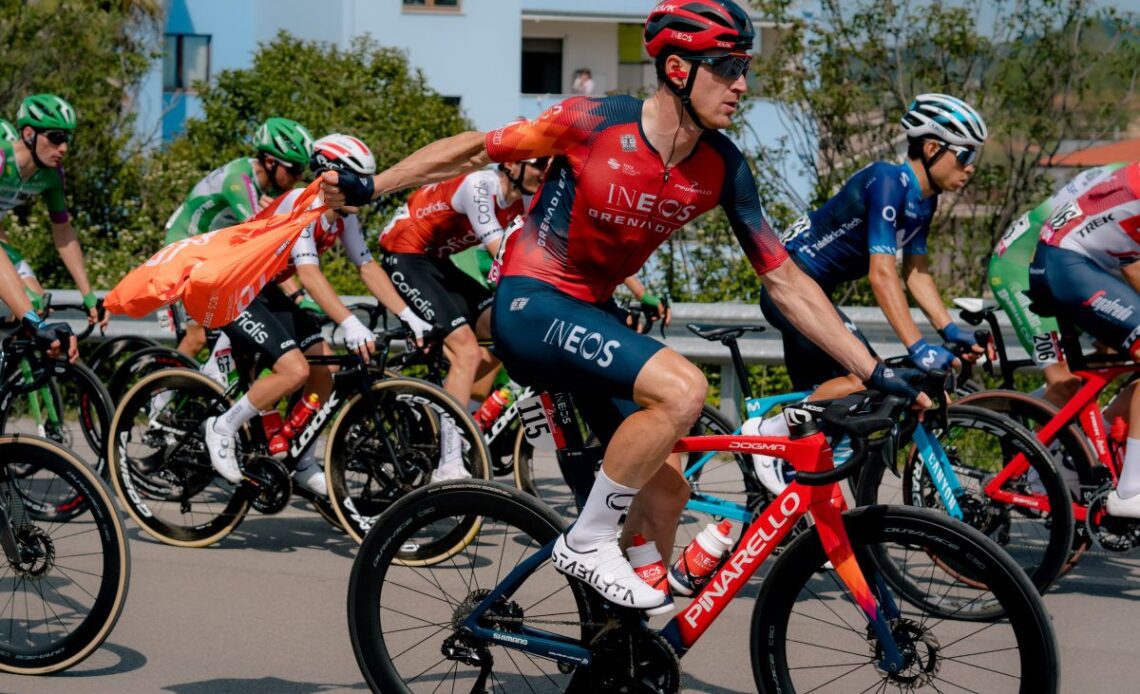From the Tour de France and Paris-Roubaix to the GP Kranj and Tour of Estonia, every bike race around the world has one thing in common – the feed zone.
Positioned along the course of every race in professional cycling, the feed zone is a key point of the race often overlooked by fans – it’s not a high-mountain climb or a steep hill where riders can make a difference, but its unseen effects still have a large influence on the action.
Team soigneurs race away from the start to position themselves at designated points during the route, ready to hand out drinks, energy gels, food, and snacks for their riders so they can stay fuelled throughout the hardships lying ahead on the course. With Grand Tour riders burning through up to 8,000 calories per day, it’s no surprise that the feed zone is such an important part of the course.
The process, on its surface a calm handover of nutritional and energy-giving snacks to the riders, is in reality a short sector of organised chaos during the race. Handing over packed musettes to riders speeding along in the peloton comes with its own potential pitfalls including missed feeds, or in the worst-case scenario, crashes.
It’s a place that can make or break a rider’s performance on the day, though it’s a far cry from the very early years of cycling when musettes and soigneurs at the side of the road weren’t a thing. Thankfully, riders don’t have to stop at cafes along the route or carry their food from the start of stages anymore.
Today’s feed zones can be a chaotic and hectic place, with soigneurs battling to get food, gels and drink to their riders. After setting up in the feed zone – in a slightly uphill section of road and with a minimum of 50 metres allocated per team, per UCI regulations – team staff fill dozens of bottles and musettes ready to hand over.
All staff must wear team kit in order to be easily identifiable to their riders, though with several modern team kits looking so similar, some teams choose to switch up the colours of their musettes – Ineos Grenadiers‘ brightly colours musettes in recent years are a memorable example.
Those handing out food and drink to riders have to stay on one side of the road, a maximum of a metre from the side of the road, a couple of ways to keep the feed zones predictable for all riders in the race.
Despite that, disaster can still strike at the feed zone. During stage 8 of last year’s Tour de France, Groupama-FDJ rider Thibaut Pinot was hit in the face after riding…
Click Here to Read the Full Original Article at CyclingNews RSS Feed…

